 Throughout my life, one of my passions is to attend yoga classes during my travels. I explored different yoga styles including Ashtanga, Hatha, Iyengar, Kundalini, Sivananda, Anusara, Sridaiva, Jivamukti. No matter what the style, though, there was one thing in common; the class almost always started with the chanting of OM. Even if there were no other mantras and prayers chanted there was at least one OM.
Throughout my life, one of my passions is to attend yoga classes during my travels. I explored different yoga styles including Ashtanga, Hatha, Iyengar, Kundalini, Sivananda, Anusara, Sridaiva, Jivamukti. No matter what the style, though, there was one thing in common; the class almost always started with the chanting of OM. Even if there were no other mantras and prayers chanted there was at least one OM.
 Recently, however, I visited some spas and fitness clubs with regularly scheduled yoga classes. Sadly I noticed ‘OM’ was missing. Yoga has become so popular by appealing to people’s motivations for health and fitness rather than desire for the spiritual values inherent in this ancient science. This is why Yoga has unfortunately lost some of its essence, deceiving the masses that it is only a physical practice.
Recently, however, I visited some spas and fitness clubs with regularly scheduled yoga classes. Sadly I noticed ‘OM’ was missing. Yoga has become so popular by appealing to people’s motivations for health and fitness rather than desire for the spiritual values inherent in this ancient science. This is why Yoga has unfortunately lost some of its essence, deceiving the masses that it is only a physical practice.
Surya Namaskarah Practice
Traditionally the well-known practice of the Surya Namskarah (Sun Salutations) is performed with 12 mantras. Every posture is connected to a mantra, which is chanted internally during the movement or externally in each of the postures.
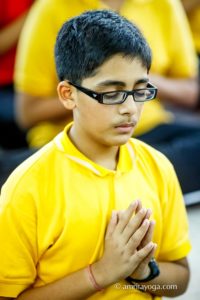 Today, millions of people all over the world are practicing variations of Surya Namaskarah, but who is doing it with mantras? Nowadays, we see very few schools weaving in mantras during the Surya Namaskarah, not to mention using the mantras during other parts of the asana practice.
Today, millions of people all over the world are practicing variations of Surya Namaskarah, but who is doing it with mantras? Nowadays, we see very few schools weaving in mantras during the Surya Namaskarah, not to mention using the mantras during other parts of the asana practice.
When Amrita Yoga was introduced in Amma’s ashram in Amritapuri, I was happy to see that Amma didn’t want it to be taught only as a physical practice. Spiritual values are well-integrated into the classes, bringing prayers and sacred mantras into the asana practice.
Students are encouraged to use their personal mantras in simple asanas, restorative postures, and emphasis is on the mantras ‘MA’ and ‘OM’. Mantras are interwoven throughout the various sequences taught and practiced in Amrita Yoga.
 The Roots of Mantra with Asanas
The Roots of Mantra with Asanas
Using the mantras during the asana practice is not a new concept. By using mantras, we are walking in the footsteps of the ancient rishis who were constantly attuned to these subtle vibrations.
According to the Indian Vedic tradition, when beginning a new endeavor, even the daily opening of a shop or starting of a short journey, one should start with prayers. All Hindu prayers contain the sacred syllable OM because this mantra is considered the primordial sound. It is the origin of all sounds and languages.
The simple chanting of OM not only focuses the mind and creates positive vibrations but also reminds us of the absolute reality underlying the whole creation. OM is the universal sound or mantra which stands for the infinite entirety of the universe. As Amma sings beautifully in Omkara Divya Porule, OM is, in essence, our own true self.
 The mantra opens the flow of energy in the body and creates a deep connection to the divine as the postures are performed. Chanting mantras during the asana practice, either with the movements or afterward as an adjunct practice, results in a clear mind and a sense of expansiveness.
The mantra opens the flow of energy in the body and creates a deep connection to the divine as the postures are performed. Chanting mantras during the asana practice, either with the movements or afterward as an adjunct practice, results in a clear mind and a sense of expansiveness.
The Divinity of MA and OM
The mantras MA and OM represent divine love and divine light. As we chant MA and OM, we merge with those divine vibrations, which are actually our true nature, pure consciousness. 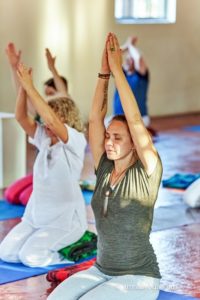 Regardless of time or place, for a devotee, all actions in her or his life are an offering to the Lord.
Regardless of time or place, for a devotee, all actions in her or his life are an offering to the Lord.
So naturally, for someone practicing yoga with such dedication and devotion, the elements of prayers, sacred mantras and asana practice are very closely connected.
Author: Dayalu Alwin D’Angelo
As always, thoughtful comments are invited and appreciated. Share your reflections with us! See below to leave a comment.

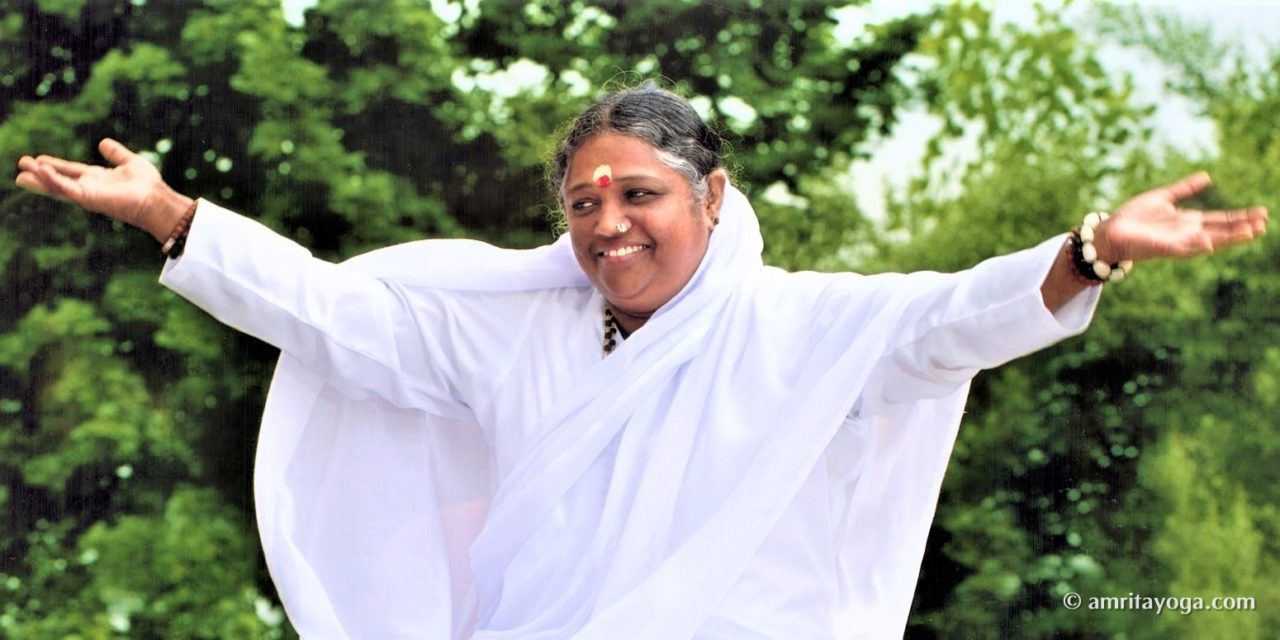
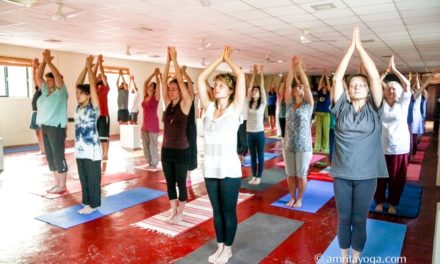

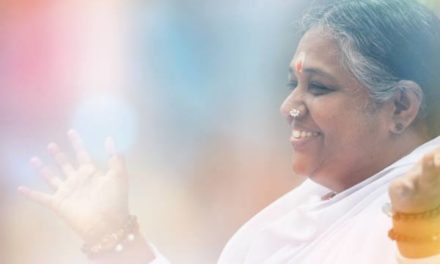

It is sad to see that yoga has lost its essence in so many places that it is taught in the west. Practicing Amrita Yoga daily with the internal chanting of MA and OM brings so much peace and ease to the practice, it has helped me so much